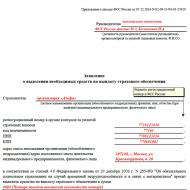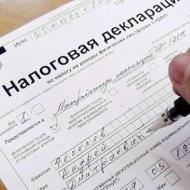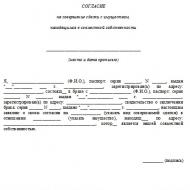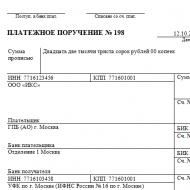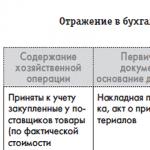
Insurance contributions to the Federal Insurance Fund are the responsibility of any organization. Compulsory Health Insurance Fund
Some changes in 2018 regarding general mandatory contributions will partly affect health insurance. From January 1, 2018, a different fixed amount will be applied for individual entrepreneurs without employees. It is planned that it will not depend on the minimum wage. No innovations are expected in terms of the tariff rate and the maximum base.
The uniform tariff rate of contributions, taking into account the amount for compulsory medical insurance, will not change from the new year. Its total size remains the same - 30%, which is regulated by the Tax Code of the Russian Federation, Art. 425 and 426. It is assumed that the total rate will remain unchanged until 2019, after which it will increase to 34%.
Benefits for reduced compulsory medical insurance rates will also not change. Their size (from 0 to 4%) and conditions of use are specified in detail in Art. 427 Tax Code of the Russian Federation.
| Policyholders (the main part of beneficiaries in accordance with Article 427 of the Tax Code of the Russian Federation) | Preferential compulsory medical insurance rates in 2017-2018. |
| Individual entrepreneurs on the simplified tax system, organizations with an income of at least 70% of the total profit, engaged in a preferential type of activity; pharmacies, individual entrepreneurs on UTII with a pharmacy license; payers participating in the Skolkovo project; insurers who pay remuneration to crew members of ships registered in the registry | 0% |
| IT organizations | 4% |
| Participants of the FEZ of Crimea and Sevastopol; residents of the ASEZ and the free port of Vladivostok | 0,1 % |
These tables indicate that compulsory medical insurance contributions for employees can be mandatory and preferential. In isolated situations, policyholders are exempt from paying them.
When calculating the amount of compulsory medical insurance contribution payable, we take into account current rates and the employee's earnings. The calculation formula for payments is standard: earnings * 5.1%. In payment documents when paying compulsory medical insurance contributions recorded KBK 182 1 02 02101 08 1013 160.
Insurance premiums for compulsory health insurance for entrepreneurs since 2018
Entrepreneurs calculate the amount of mandatory medical contributions in 2017 taking into account the minimum wage, but regardless of the amount of profit. The calculation formula is used: minimum wage × MONTHS × 0.051. Fixed amount in Russian rubles to be paid at this time reached the digital value of 4,590.
As part of the new trend in legislation from 2018:
- the link between the fixed amount for compulsory medical insurance and the minimum wage is cancelled;
- the applied fixed value was increased to 5,840 rubles, which is 1,250 more than the previous year.
This means that for 2018, the individual entrepreneur will be required to pay compulsory medical insurance contributions by transferring 5,840 rubles. to the Federal Tax Service. It is determined at the legislative level that a fixed value will be indexed annually
Deadlines for payment of contributions and submission of reports for compulsory medical insurance from 2018.
Compulsory compulsory medical insurance contributions are calculated from the employee’s earnings on a monthly basis. It follows from this that the timing of their payment directly depends on the payments to the employee. The law sets the deadline for payment - the 15th day of the month following the month in which contributions are calculated. Basis - Tax Code of the Russian Federation, Art. 431, paragraph 3.
In this case, they apply general rules postponing holidays and holidays on the first working day. That is, if the payment deadline falls on a weekend (holiday), you can pay on the first working day following it.
Separate rules for paying a fixed amount under compulsory medical insurance have been defined for entrepreneurs. In 2018, they are offered the choice of making an insurance payment in one lump sum or in installments. Thus, the established value is 5,840 rubles. Individual entrepreneurs have the right to divide and pay every month, quarterly or once every six months.
There is a mandatory condition that must be met: one-time and partial insurance payments must be made by December 31 of the reporting year. Reports for compulsory medical insurance payments obligated person
as part of a single new form for calculating KND 1151111, which combines all types of insurance premiums. It was introduced by order of the Federal Tax Service of the Russian Federation No. ММВ-7-11/551@ dated 10.10.2016.
For the first time, it began to be drawn up and presented in the 1st quarter of 2017. It will also be used next year. This reporting document is drawn up on an accrual basis for the whole year.
- 05.2017.
- 07.2017.
- 10.2017.
- 04 2018.
The deadline for submitting a single calculation has been set - the 30th day of the month, which follows the reporting month. In order of priority, taking into account weekends and holidays, the current dates will be:
Example 1. Calculation and payment of compulsory medical insurance contributions by an entrepreneur for the partial year 2018.
Resident of the Russian Federation, L. R. Vasilchenko received the status of entrepreneur on February 15, 2018. After working for several months on his own, without employees, he was deregistered that same year, on November 15, 2018.
The calculation sequence will be as follows. First, the amount of compulsory medical insurance for partial months of work is calculated separately, i.e. for February (13 days) and November (14 days). Then the calculation is carried out for entire months of work in 2018, and this is the period from March to October (a total of 8 months). Then everything is summed up and the total amount of compulsory medical insurance payment due is obtained.
So, the procedure for calculating compulsory medical insurance payments of individual entrepreneur L. R. Vasilchenko is as follows:
- Compulsory medical insurance payment per month: 5,840 / 12 months = 486 rubles.
- Compulsory medical insurance payment for partial February: 486 / 28 days of February * 13 working days = 226 rubles.
- Compulsory medical insurance payment for partial October: 486 / 31 days of October * 14 working days = 523 rubles.
- Compulsory medical insurance payment for whole months of work: 486 * 8 whole working months = 3,888 rubles.
- Summation of calculated values for partial and whole months of work of individual entrepreneur L. R. Vasilchenko: 226 + 523 + 3,888 = 4,637 rubles.
The total amount of payments for compulsory medical insurance to L. R. Vasilchenko for the period of his tenure as an entrepreneur in rubles amounted to 4,637.
If the annual income for 2017 exceeded RUB 300,000, the deadline for additional payment (1% of the excess amount) was postponed. From 2018, the additional payment will need to be paid no later than July 2, 2018.
Answers to frequently asked questions
Question 1: Is it necessary for an individual entrepreneur who did not carry out activities during 2018 to pay mandatory medical contributions?
Yes, because medical contributions, like pension contributions, are considered generally obligatory payments. Profit, no movement bank accounts, implementation of activities does not play a role here. Until your entrepreneur status is lost, you will have to pay medical fees. Consequently, for 2018, the individual entrepreneur will be required to pay a fixed amount - 5,840 rubles.
Question 2: How to calculate the amount of mandatory medical contributions for an individual entrepreneur for the whole of 2018, if his annual profit was more than 300,000 rubles? Do I need to pay extra 1% on the excess amount? An entrepreneur without employees.
For compulsory insurance payments for medical care, a fixed amount is established (5,840 rubles), and it will have to be transferred before December 31 of the reporting year.
1% of the excess amount of income (for profits of more than 300,000 rubles per year) is calculated and paid once for the pension part.
Compulsory health insurance is part of the state insurance program (along with voluntary health insurance), which allows you to compensate a citizen’s expenses for medical care. Volume medical services determined by federal and regional legislation (the territorial program can expand and complement the federal one). Funds for such compensation are accumulated in the Federal Compulsory Medical Insurance Fund. And they come there from policyholders who transfer contributions to the FFOMS; The 2019 rate of such premiums differs for different types of policyholders. This is what we will talk about in the article.
Who administers payments
Let us recall that since 2017, the Federal Tax Service has been the administrator of payments, which are subsequently credited to the accounts of such funds as the Pension Fund (PFR), Social Insurance (FSS) and Compulsory Medical Insurance (FFOMS). This must be taken into account when generating payment orders and receipts, taking into account the Tax Service details. It is important not to make a mistake with the indication.
Contributions to the Pension Fund and the Federal Compulsory Medical Insurance Fund, as well as to the Social Insurance Fund in case of temporary disability and in connection with maternity, are administered by the Federal Tax Service. Only “injury” contributions, that is, in the event of an injury on production facility or the occurrence of an occupational disease, are still paid to the Social Insurance Fund. The reporting procedure, payment and amount of deductions are now regulated Chapter 34 of the Tax Code of the Russian Federation “.
So, despite the fact that in the payment order in field 104 “Purpose of payment” you will indicate the KBK starting with the numbers 182 (this is the Tax Service code), in the future the money will go to the Compulsory Medical Insurance Fund; The 2019 deduction percentage depends on a number of circumstances. More details about this are in the table below.
Accrual procedure and legal nature
First, let’s be clear: it would be a mistake to assume that contributions to the Federal Compulsory Medical Insurance Fund are a tax. These mandatory payments have a completely different legal nature. Contributions to the funds are made as insurance premiums in the event of the occurrence of a certain event in which payments will be made to the insured person.
The payment amount is still calculated based on:
- deductions in favor of citizens and individuals;
- established limits of the taxable base;
- payment tariffs.
For health insurance, a maximum deduction base is not established, therefore, the size of the tariff does not depend on it. Contributions to the Compulsory Health Insurance Fund are calculated and paid from the following income:
- rewards for employment contracts and civil contracts for the provision of services and performance of work;
- royalties (other funds received for the implementation of property rights are not taken into account);
- income from business and other similar activities.
IN Art. 422 Tax Code of the Russian Federation Amounts that are not subject to these mandatory payments are listed.
Tariffs
Contributions to the Federal Compulsory Medical Insurance Fund in 2019 will remain the same; tariff changes are not expected in the near future. The rate is 5.1%. For pension insurance it is equal to 22% and for social insurance - 2.9% (on a general basis, if the income limit is not reached). “Injuries” are deducted from 0.2 to 8.5%. But there are persons who have the right to apply reduced rates. These categories in this year also remained unchanged.
Thus, more favorable conditions have been determined for a number of insurers: for example, for pharmaceutical organizations; commercial, charitable organizations and individual entrepreneurs on the simplified tax system; for scientific, sports, cultural organizations and a number of others, a generally zero rate for health insurance has been established. All beneficiaries are listed in the table below.
Insurance premiums in 2019, rates, table:
|
Conditions under which the reduced rate is used |
|||
|
Pension insurance |
Social |
Medical |
|
|
Legal entities participating in the Skolkovo project |
|||
|
Legal entities and individual entrepreneurs on the simplified tax system, engaged in certain types of activities, with income for the calendar year of less than 79 million rubles |
|||
|
Legal entities and individual entrepreneurs on UTII, carrying out pharmaceutical activities |
|||
|
Charitable organizations on the simplified tax system |
|||
|
Non-profit organizations on the simplified tax system engaged in scientific research, education, organization of mass sports, operating in the field of culture, art, healthcare (except for state institutions and municipalities) |
|||
|
Legal entities and individual entrepreneurs with the status of residents of the port of Vladivostok, a territory of rapid socio-economic development |
|||
|
IT companies |
|||
|
Entities operating on a patent taxation system, with the exception of those engaged in leasing premises and in the catering industry |
|||
|
Entities engaged in technology development activities |
|||
|
Partnerships and business entities that apply in practice the results of intellectual activity created by budgetary educational organizations that are their participants |
|||
|
Entities engaged in tourism and recreational activities |
|||
Insurance premiums must be paid in 2017 according to new rules. There is no need to transfer contributions to the Pension Fund of the Russian Federation, the Social Insurance Fund of the Russian Federation and the Compulsory Medical Insurance Fund. They have been handed over to the tax authorities. The CBC has also changed. Only contributions for injuries remained for the Social Insurance Fund.
From January 1, 2017, insurance premiums returned to the Tax Code. A new chapter 34 of the Tax Code of the Russian Federation has appeared. Tax authorities will administer the payment of contributions, but this does not mean that companies will no longer have to interact with the funds. Let's consider which departments, from January 1, 2017, control processes related to insurance premiums, what reporting, where and how to submit.
What are the powers of tax authorities?
Administration means that the competence of the tax authorities will fall only certain functions, some of them are still retained by the funds. The range of powers of tax officials is quite wide. Now they have the right:
- control the correctness of calculation, completeness and timeliness of payment of insurance premiums;
- accept calculations for insurance premiums, starting with the calculation for the 1st quarter of 2017. Remember that you must submit the calculation no later than the 30th day of the month following the reporting period. If the last day of delivery falls on a weekend or non-working day, the deadline is postponed to the next working day. Simply put, the calculation for the 1st quarter must be submitted no later than May 2, 2017;
- offset/refund amounts of overpaid insurance premiums. This also applies to periods expiring before January 1, 2017. Decisions on them were made by the Pension Fund of Russia or the Social Insurance Fund and submitted to the Federal Tax Service for execution.
Tax authorities will also provide installment plans or deferments for insurance premiums, and collect arrears, penalties and fines, including those that arose before January 1, 2017.
What to do with leftovers
Tax authorities will receive information on the balances that policyholders had as of January 1, 2017 from the Pension Fund of the Russian Federation and the Social Insurance Fund. The funds will send information to tax authorities through the interdepartmental electronic interaction system.
To avoid any misunderstandings, it would be a good idea for all insurance premium payers to reconcile their payments with the funds. Then receiving a demand for repayment of arrears will not be a surprise. At the same time, it will be possible to understand what amount to return to the fund if there is an overpayment.
How to pay fees from the new 2017
You will need to pay fees and submit calculations at the location of the organization, and separate division, which independently calculates payments and rewards individuals. This means that calculations will not be accepted at the place of registration as the largest taxpayers (in the IRI). There is no need to submit calculations at the location of each separate unit (similar to 6-NDFL). Calculations are presented only by departments that independently calculate wages. Moreover, a separate balance is not required. There is a condition about it in Federal law dated July 24, 2009 No. 212-FZ, but from January 1, 2017 this law ceases to apply.
Organizations have new duty- inform the tax authorities about granting separate entities the authority to accrue payments and rewards to individuals. Based on such information, the units will be registered with the tax office as a payer of insurance premiums.
How to report
The form for calculating insurance premiums, the procedure for filling it out and electronic format approved by order of the Federal Tax Service of Russia dated October 10, 2016 No. ММВ-7-11/551. The calculation contains not only information in general about the payer of insurance premiums, but also personalized information for each individual who is in an employment relationship with the payer.
An important conclusion can be drawn by studying the norm of paragraph 7 of Article 431 Tax Code RF. It is reasonable for policyholders, even before the start of the reporting period for the 1st quarter of 2017, to verify the compliance of full name-SNILS-TIN (if the employer has one) for all employees. The fact is that if there are discrepancies regarding at least one individual, the tax authorities will not accept the entire calculation. The policyholder will be sent a notice of refusal. In this case, 5 days are allotted for correction from the date of sending the notification.
By the way, you can easily prepare and submit reports using the online service “My Business” - Internet accounting for small businesses. The service automatically generates reports, checks them and sends them to in electronic format. You will not need to visit in person tax office and funds, which will undoubtedly save not only time, but also nerves. You can get free access to the service using this link.
What will the Pension Fund and the Social Insurance Fund do?
Some functions for administering contributions continue to remain with the Pension Fund of the Russian Federation and the Social Insurance Fund. Thus, the funds will continue to accept payments for contributions, including adjusted ones, for periods before January 1, 2017.
- conduct desk and on-site inspections, including repeated ones, make decisions based on their results;
- make decisions on the return of overpaid or collected insurance premiums (then they will be transferred to the tax authorities). Applications for the return of overpayments incurred as of January 1, 2017 must be submitted to the Pension Fund and the Social Insurance Fund at the place of registration;
- write off uncollectible arrears on insurance premiums, penalties and fines.
Powers of the Pension Fund
- maintaining individual (personalized) records in the compulsory pension insurance system;
- receiving information about insured persons and monitoring the correctness of presentation and reliability of information necessary for maintaining individual (personalized) records.
Who keeps personalized records
The pension fund maintains individual (personalized) records in the compulsory pension insurance system. You still need to submit information in the SZV-M form to the territorial offices of the fund. Term delivery of SZV-M changed. You must report no later than the 15th day of the month following the reporting month. Taking into account the postponement of the reporting deadline, the last day for SZV-M for December 2016 is January 16, 2017.
Information about the length of service of insured persons must be submitted to Pension Fund offices annually, no later than March 1 of the following year. Information on length of service according to the new form developed by the Pension Fund must be submitted not only at the end of the year, but also if the employee applies for a pension. Three days are allotted for this from the date of submission of the application.
The Pension Fund of the Russian Federation continues to collect registers of insured persons for whom additional insurance contributions for a funded pension have been transferred or contributions have been paid by the employer. In this case, the DSV-3 form is submitted no later than 20 days from the end of the quarter.
Information on payments and accrued insurance premiums for compulsory pension insurance(for reflection on the accounts of insured persons) the Pension Fund will receive from the tax authorities. 5 days are allotted for this when calculations are submitted electronically, or 10 days for information submitted on forms. If errors or inconsistencies are found, the fund will return the information to the tax authorities. They, in turn, will send payers notifications about the provision of adjustments.
When to contact social security
The Social Insurance Fund, as before, will control the calculation and payment of contributions for injuries. This means that payments for this type of contribution will continue to be accepted. New form 4-FSS must be submitted to the fund no later than the 20th day of the month following the reporting period on paper and before the 25th day of the month following the reporting period in electronic form.
The Fund will now verify the correctness of the declared expenses for payments for temporary disability and in connection with maternity using the calculation data provided by the tax authorities. And there, to the tax authorities, he will report the results of the audit.
In regions that do not participate in the pilot project for direct payment of benefits from the Social Insurance Fund, the Fund’s branches, upon applications from policyholders, reimburse excess payment costs insurance coverage over accrued contributions. If you need to reimburse funds for periods after January 1, 2017, you need to take into account changes in the list of submitted documents. Instead of Form 4-FSS, you will need to submit a calculation certificate along with the application. Forms necessary documents are given in the letter of the FSS of Russia dated December 7, 2016 No. 02-09-11/04-03-27029.
How to fill out payment documents
Until the new system of interaction between regulatory authorities is fully established, there are risks of payments being entered incorrectly or reflected in the tax authorities’ database. Therefore, organizations are advised to devote Special attention filling out payment order details.
"TIN and checkpoint of the recipient." Please indicate your tax identification number and checkpoint tax authority, which administers your payments.
“Recipient” is the abbreviated name of the Federal Treasury authority, and in brackets is the abbreviated name of the tax authority that administers the payment.
"Code budget classification" The first three characters indicate the code of the chief administrator of budget revenues, that is, they should take the value “182” - Federal Tax Service.
KBK codes, which from January 1, 2017 must be used to pay insurance premiums, were approved by Order of the Ministry of Finance of Russia dated December 7, 2016 No. 230n (being registered with the Ministry of Justice). When filling out codes, be especially careful with the subtypes of income: they differ depending on the period for which insurance premiums are paid. And be sure to indicate for what period the payment is being made.
Attention!
From January 1, 2017, pay contributions only for new BCCs, even if these are payments for December. We have listed the new codes in the table below. In December, pay your fees for the old KBK.
Table. New BCCs for contributions for 2017
| Payment type | KBK |
|
| contributions for December "2016 | fees for January, February, etc. |
|
| Contributions from employee benefits |
||
| Contributions | 182 1 02 02010 06 1000 160 | 182 1 02 02010 06 1010 160 |
| Penalty | 182 1 02 02010 06 2100 160 | 182 1 02 02010 06 2110 160 |
| Fines | 182 1 02 02010 06 3000 160 | 182 1 02 02010 06 3010 160 |
| Contributions for temporary disability and maternity |
||
| Contributions | 182 1 02 02090 07 1000 160 | 182 1 02 02090 07 1010 160 |
| Penalty | 182 1 02 02090 07 2100 160 | 182 1 02 02090 07 2110 160 |
| Fines | 182 1 02 02090 07 3000 160 | 182 1 02 02090 07 3010 160 |
| Contributions for injuries |
||
| Contributions | 393 1 02 02050 07 1000 160 | 393 1 02 02050 07 1000 160 |
| Penalty | 393 1 02 02050 07 2100 160 | 393 1 02 02050 07 2100 160 |
| Fines | 393 1 02 02050 07 3000 160 | 393 1 02 02050 07 3000 160 |
| Contributions for compulsory health insurance |
||
| Contributions | 182 1 02 02101 08 1011 160 | 182 1 02 02101 08 1013 160 |
| Penalty | 182 1 02 02101 08 2011 160 | 182 1 02 02101 08 2013 160 |
| Fines | 182 1 02 02101 08 3011 160 | 182 1 02 02101 08 3013 160 |
Elena Kulakova
Payers of insurance premiums, in accordance with Art. 419 of the Tax Code of the Russian Federation are legal entities– employers making payments wages individuals, as well as Individual entrepreneurs who are obliged to pay both for themselves and for hired workers.
Insurance premiums are transferred to:
- compulsory pension insurance (OPI);
- compulsory health insurance (MHIF);
- mandatory social insurance– for temporary disability, “injuries” (FZ-125) and “maternity”.
The list of payments not subject to insurance is contained in Art. 422 of the Tax Code of the Russian Federation.
Expert opinion
Andrey Leroux
More than 15 years of experience Specialization: contract law, criminal law, general theory rights, banking law, civil process
Enterprises and organizations that do not enjoy the right to preferential (reduced) tariffs make payments at general tariffs (Article 426 of the Tax Code of the Russian Federation).
The total volume of insurance premiums in 2019 cannot exceed 30%, of which:
- PFR – 22% on income up to limit base and +10% on income above the base;
- Compulsory medical insurance – 5.1% without restrictions on maximum values;
- OSS – 2.9% without upper limit restrictions.
The subjects of taxation will be citizens of the Russian Federation; foreigners who legally work on the territory of Russia, but are not highly qualified workers (HQS) and citizens of the EAEU who legally work on the territory of the Russian Federation.
Rates for foreign workers
Insurance premiums paid from the income of foreigners (but not EFES citizens), who are not HQS, legally working in the Russian Federation are:
- Mandatory pension insurance – 22% + 10% above the base;
- OSS (VNiM) 1.8;
Other fees are not paid.
For foreigners who are HQS:
- OPS – 22% + 10% above the base;
- OSS (VNiM) – 2.9%.
Other insurance premiums are not paid.
Table 1 - Insurance premiums for individual entrepreneurs “for themselves” in 2019
Reduced insurance premium rates in 2019
| Category of beneficiaries | Tariffs in 2019 |
| Companies implementing the results of intellectual activity | Pension Fund – 20% Social Insurance Fund – 2.9% Compulsory medical insurance – 5.1% |
| Non-profit and charitable organizations simplified | Pension Fund – 20% FSS – 0% Compulsory medical insurance – 0% |
| Skolkovo residents | Pension Fund – 14% FSS – 0% Compulsory medical insurance – 0% |
| Residents of special economic zones | Pension Fund – 6% Social Insurance Fund – 1.5% Compulsory medical insurance – 0.1% |
Contributions under GPC agreements
From the income of individuals working under a GPC agreement (of a civil nature), contributions are paid only to the Pension Fund and the Federal Compulsory Compulsory Medical Insurance Fund.
In accordance with Chapter 34 of the Tax Code of the Russian Federation, contributions to the Social Insurance Fund in case of temporary disability and in connection with maternity are not accrued, but to the Social Insurance Fund for accidents at work and occupational diseases- only if provided for in GPC agreement(Paragraph 4, clause 1, article 5 of Law No. 125-FZ).
Payments not subject to contributions
Certain types of employee benefits are not subject to insurance premiums. For example, government benefits compensation payments, material aid, tuition fees, payments in favor of foreigners, etc. (More details in Chapter 34 of the Tax Code of the Russian Federation).
Payment procedure
Payments are made monthly until the 15th of the following month. If the last day of the payment period falls on a weekend or holiday, payment is postponed to the next working day. You can pay from your current account By payment order or at Sberbank. The tax website also has Personal Area by TIN, where the debt is reflected and you can print a receipt. Or you can get receipts from the tax office.
The main change in the field of insurance premiums in 2017 is the transfer of powers off-budget funds for monitoring the payment of contributions, debt collection and acceptance of reporting on contributions to the Federal tax service. Corresponding changes in legislative acts have already been introduced (clause 2, clause 1, clause 2.1, article 32 of the Tax Code of the Russian Federation, as amended, valid from 01/01/2017).
Law No. 212-FZ ceases to be in effect in 2017, and legal relations regarding insurance premiums will be regulated by Chapter. 34 Tax Code of the Russian Federation. In accordance with it, the reporting periods will be, as before, the first quarter, half a year and 9 months, the billing period will be a calendar year (Article 423 of the Tax Code of the Russian Federation, as amended, valid from 01/01/2017). All the same persons will be classified as payers of insurance premiums - organizations, individual entrepreneurs, lawyers, notaries and other persons engaged in private practice (Article 419 of the Tax Code of the Russian Federation, as amended, effective from 01/01/2017). All the same payments will be subject to the object of taxation of contributions (Article 420 of the Tax Code of the Russian Federation, as amended, effective from 01/01/2017) and, in general, the basis for calculating contributions will be determined according to the same rules (Article 421 of the Tax Code of the Russian Federation, as amended, valid from 01/01/2017).
Insurance premium rates for 2017
As you can see, the basic contribution rates in 2017 will remain the same. At the same time, for calculating contributions to OPS and VNiM, limit values bases, upon reaching which the rate for calculating contributions will change.
Reduced rates Legislators did not cancel the contributions. But, as before, not all policyholders will be able to use them.
Reduced contribution rates - 2017
Reduced tariff rates, compared to 2016, have not changed. However, now the conditions that a contribution payer must meet in order to be entitled to reduced tariffs are spelled out more clearly and in detail in the Tax Code of the Russian Federation (clauses 4-10 of Article 427 of the Tax Code of the Russian Federation, as amended, valid from 01/01/2017). New (additional) requirements have been established for some beneficiaries.
In addition, for many categories of payers, the Tax Code expressly states that if the specified conditions are not met, the organization or individual entrepreneur loses the right to apply reduced tariffs from the beginning of the billing period, i.e., the calendar year.
| Insured category | OKVED codes for types of activities* | Tariff for calculating contributions | ||
|---|---|---|---|---|
| to the Pension Fund of Russia | in FSS on VNiM | in FFOMS | ||
| Organizations and individual entrepreneurs on the simplified tax system, conducting a preferential type of activity, the income from which is at least 70% of the total income of the simplified tax system. Wherein the annual income of a simplifier should not exceed 79 million rubles. If this limit is exceeded, the payer of contributions loses the right to reduced tariffs from the beginning of the billing period (clause 5, clause 1, clause 3, clause 2, clause 6, article 427 of the Tax Code of the Russian Federation, as amended, valid from 01/01/2017) | 13, 14, 15, 16, etc. | 20 | 0 | 0 |
| Pharmacy organizations, as well as individual entrepreneurs with a license to conduct pharmaceutical activities, on UTII. Reduced contribution rates apply only to employees engaged in pharmaceutical activities (clause 6, clause 1, ) | 46.18.1, 46.46.1, 47.73 | 20 | 0 | 0 |
| Individual entrepreneurs using patent system taxation - in relation to payments and remuneration of employees who are engaged in patent activities. For some types of activities, this “benefit” does not apply (clause 9, clause 1, clause 3, clause 2, article 427 of the Tax Code of the Russian Federation, as amended, valid from 01.01.2017) | 31.0, 74.20, 75.0, 96.01, 96.02, etc. | 20 | 0 | 0 |
| Non-profit organizations on the simplified tax system, except for state and municipal institutions, operating in the field of social services for citizens, scientific research and development, education, healthcare, culture, art and mass sports (clause 7, clause 1, clause 3, clause 2, p 7 Article 427 of the Tax Code of the Russian Federation, valid from 01/01/2017) | 37, 86, 87, 88, 93, etc. | 20 | 0 | 0 |
| Charitable organizations on the simplified tax system (clause 8, clause 1, clause 3, clause 2, clause 8, article 427 of the Tax Code of the Russian Federation, as amended, valid from 01/01/2017) | 64.9, 88.10 | 20 | 0 | 0 |
| Organizations active in the field information technologies(Clause 3, Clause 1, Clause 1, Clause 2, Clause 5, Article 427 of the Tax Code of the Russian Federation, as amended, valid from 01/01/2017). | 62, 63 | 8 | 2 | 4 |
| Business companies and partnerships on the simplified tax system, who are engaged in the implementation of the results of intellectual activity (inventions, utility models, etc.), the rights to which belong to budgetary and autonomous (including scientific) institutions (clause 1, clause 1, clause 1, clause 2, clause 4 Article 427 of the Tax Code of the Russian Federation, as amended, effective from 01/01/2017). | 72 | 8 | 2 | 4 |
| Organizations and individual entrepreneurs that have entered into agreements with the management bodies of special economic zones on the implementation of technical and innovative activities, as well as tourist and recreational activities (clause 2, clause 1, clause 1, clause 2, article 427 of the Tax Code of the Russian Federation, as amended, valid. from 01/01/2017). | 65.20, 79.1, 94.99, 62.0, 63.1, 63.11.1, etc. | 8 | 2 | 4 |
| Payers of contributions making payments and rewards to crew members of ships registered in the Russian International Register of Ships (with some exceptions) in relation to these payments (clause 4, clause 1, clause 2, clause 2, article 427 of the Tax Code of the Russian Federation, as amended, valid from 01.01.2017) | 50 | 0 | 0 | 0 |
| Organizations that have received the status of a participant in the Skolkovo project for the implementation of research, development and commercialization of their results (clause 10, clause 1, clause 4, clause 2, article 427 of the Tax Code of the Russian Federation, as amended, valid from 01/01/2017) | 72.1 (Part 8 of Article 10 of the Law of September 28, 2010 No. 244-FZ) | 14 | 0 | 0 |
| Contribution payers who have received free membership status economic zone on the territory of the Republic of Crimea and the federal city of Sevastopol (clause 11, clause 1, clause 5, clause 2, clause 10, article 427 of the Tax Code of the Russian Federation, as amended, valid from 01/01/2017) | Any OKVED codes, except 05, 06, 07, 08, 09.1, 71.12.3 (Part 2 of Article 12 of the Law of November 29, 2014 No. 377-FZ) | 6 | 1,5 | 0,1 |
| Contribution payers who have received the status of resident of the territory of rapid socio-economic development ( | ||||

